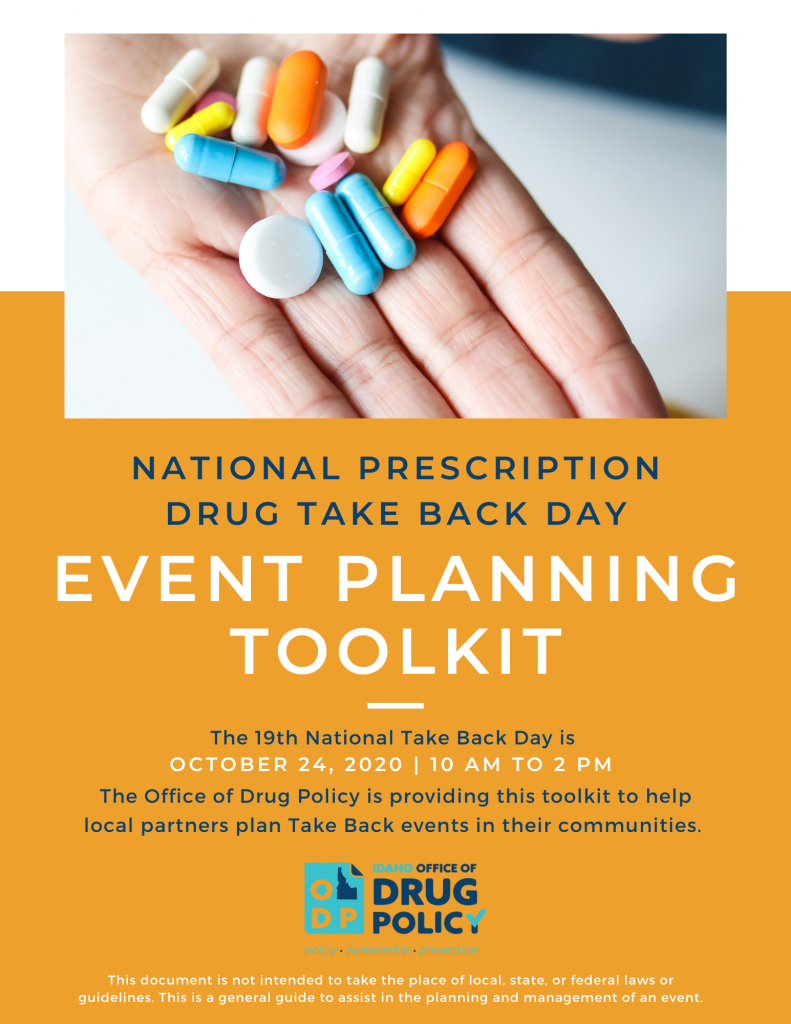Boost Your Budget

Decrease Financial Stress, Promote Health!
April 12th – 16th will be the second annual “Boost Your Budget Week: Find Your Benefits to Age Well” campaign, promoted by the National Council on Aging (NCOA). Every year, millions of Americans and thousands of Idahoans are eligible for, but not enrolled in, benefits that can save them money on health care, prescriptions, food, rent, utilities, and more. In 2014, only 63.4% of Medicare beneficiaries eligible for Medicare Savings Programs (MSPs) and Part D Low-Income Subsidy (LIS)/Extra help were enrolled in those programs, meaning that over a third of Medicare beneficiaries across the country – almost 3 million older adults and persons with disabilities! – were not enrolled. The national campaign seeks to bring together community partners to:
- Educate low-income Medicare beneficiaries and their caregivers about the benefits available to help improve their economic security and health
- Connect individuals to online (BenefitsCheckUp®) and community-based resources for screening and application assistance
Community and state agencies, including local businesses, that work closely with low-income seniors and adults with disabilities should join the effort in promoting “Boost Your Budget Week”. Organizations wanting to be a part of the campaign, can choose some of the following activities:
- Share information about benefits as part of a food drive, health fair, or tax assistance event
- Sponsor a “telethon” at your local radio or TV station
- Run ads in local newspapers or on social media
- Invite media, legislators, and the public to tour your facility and learn about the importance of benefits for your community
The official start date for “Boost Your Budget Week” is scheduled for Monday, April 12th, 2021, and runs until Friday, April 16th, 2021. Community and government partners wanting to take part and promote the campaign are more than welcome to begin at any time before this date.
For further information and resources needed to start planning your “Boost Your Budget Week” events, please visit the official “Boost Your Budget Week” website.
Your efforts can be life changing for low income seniors or people living with disabilities. Visit the ICOA website to learn more about the MIPPA/MSP programs.
Colorectal Cancer: Fact or Fiction

By: Brie Veltri, Health Program Specialist, Idaho Department of Health and Welfare
March is National Colorectal Cancer Awareness Month
Colorectal cancer (cancer of the colon or rectum) is the third most common cancer in the United States and the second leading cause of death from cancers that affect both men and women. Colorectal cancer affects people in all racial and ethnic groups and is most common in people age 50 and older.
MYTH: Colorectal cancer only affects men.
Colorectal cancer affects men and women of all racial and ethnic groups.
FACT: Colorectal cancer is the second leading cancer killer in the U.S.
Of cancers affecting both men and women, colorectal cancer is the second leading cancer killer in the United States and the third most common cancer in men and in women.
FACT: Getting screened for colorectal cancer can help prevent the disease.
Screening helps find precancerous polyps (abnormal growths) in the colon and rectum so they can be removed before they turn into cancer. Screening also helps find colorectal cancer early, when treatment works best.
MYTH: If you don’t have symptoms, it means you don’t have colorectal cancer.
Colorectal polyps and colorectal cancer don’t always cause symptoms, especially early on. But screening can find polyps and colorectal cancer even before symptoms appear. That’s why getting screened regularly for colorectal cancer is so important.
FACT: The recommended age for screening is 50 years old.
Your risk of getting colorectal cancer increases as you get older. About 90% of cases occur in people who are age 50 or older. However, you may need to be tested earlier or more often than other people if you have inflammatory bowel disease such as Crohn’s disease or ulcerative colitis, a personal or family history of colorectal cancer or colorectal polyps, or a genetic syndrome such as familial adenomatous polyposis (FAP) or hereditary non-polyposis colorectal cancer (Lynch syndrome). If you think any of these things are true for you, ask your doctor when and how often you should be tested.
MYTH: The only screening test for colorectal cancer is colonoscopy.
There are several types of screening tests for colorectal cancer, including some that you can do at home. Learn about all of the screening test options and talk to your doctor about which is right for you. The best test is the one you do!
FACT: Symptoms of colorectal cancer include: blood in or on your stool, stomach pain, aches or cramps that don’t go away, losing weight and you don’t know why.
If you have any of these symptoms, talk to your doctor. They may be caused by something other than cancer. The only way to know what is causing them is to see your doctor.
FACT: Medicare and most insurance plans cover colorectal cancer screenings.
Check with your plan to see what’s covered. In addition, free or low-cost screenings may be available for you. Six states in CDC’s Colorectal Cancer Control Program provide colorectal cancer screening to low-income men and women aged 50 to 64 years who are underinsured or uninsured for screening, when resources are available, and there is no other payment option.
Talk with your provider to find out what screening option is best for you! For more information about cancer prevention, visit the Comprehensive Cancer Control Program’s website.
Asking for Help is a Strength

By: Roger Sherman, Executive Director of Idaho Children’s Trust Fund
Phew. This has been a year that we will not soon forget. Our work lives have been stressful as we have adapted to working at home. And then, for many of us, we have had to adapt our parenting to accommodate the new norm of online schooling. It has been very hard to find balance between our work and our personal lives.
As the pandemic hit, many of us who are concerned about children’s well-being worried that families would struggle with the isolation and having children at home. We certainly know some of them have and all of us parents have likely felt overwhelmed at times.
We know there have been more than normal infant deaths caused by abuse and FACES has had to respond to more severe cases of abuse than is typical. How to respond?
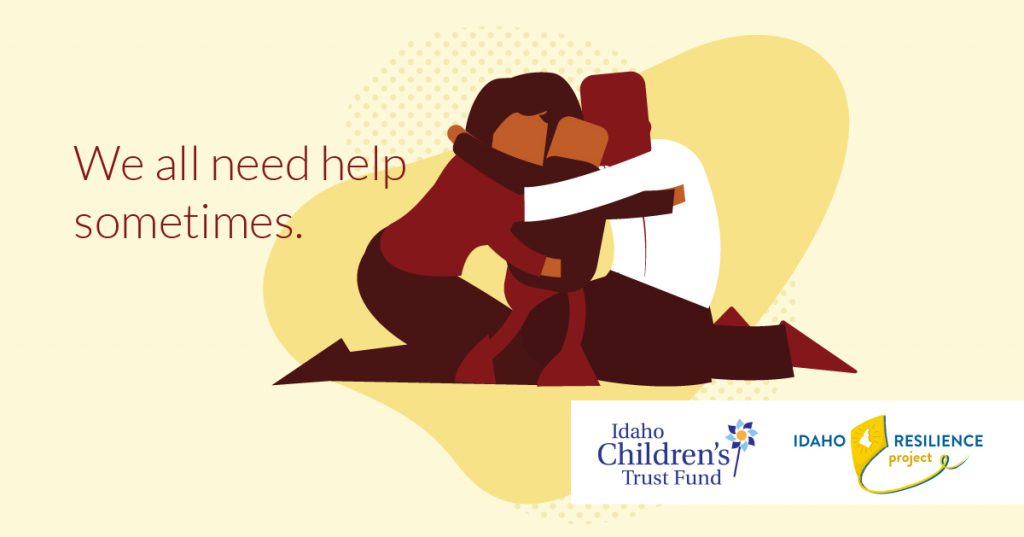
As the designated child abuse prevention organization for Idaho, the Idaho Children’s Trust Fund, which is also the state affiliate of Prevent Child Abuse America, knew we had to do something to support parents and families. We started working with St. Luke’s Community Health and that soon blossomed into a coalitional effort with Saint Alphonsus, the Idaho Academy of Pediatricians, district health departments, Idaho Voices for Children, childcare and public health divisions within the Department of Health and Welfare.
Working with the communications company 116 and West, we have created a multi-media campaign that we need your help to circulate. The campaign focuses on encouraging parents (including ourselves) to ask for help when they feel overwhelmed and provides them with a call-in number and a resource page to seek help. This will only work if we all get behind it.
While the campaign has some funding to pay for media and some goodwill from the network stations, we are hoping that state employees, the largest workforce in the state, along with employees of the hospitals, Micron and others can use the power of social media to spread the word that asking for help is a strength.
Here’s the pitch: None of us are perfect parents/We all struggle/We all need help sometimes/That’s why we’re here. Call the HelpNow line or go to www.idahofamilysupport.org for resources.
Can you put this out on your Facebook, Twitter and Instagram? Can you send it out to your family, friends and neighbors? We have static images that you can use. Email me at roger.sherman@ctf.idaho.gov.
Let’s become an army of mandated supporters!

Let’s Celebrate the National Senior Nutrition Program

Funded by the Older Americans Act, the National Senior Nutrition Program began in 1972 and has been meeting the nutritional, social, and wellness needs of Older Americans for nearly 50 years. Each March, the Idaho Commission on Aging recognizes its anniversary by celebrating the program’s rich history and tremendous value across the nation with the Area Agencies on Aging and all meal providers. The Administration for Community Living funds senior nutrition services, including home-delivered and congregate meals.

Reach out and encourage the elders in your life to consider attending a weekly congregate meal to promote a healthy mind and body!
March is a universal nutrition and diet awareness month, to raise the importance of nutritionally balanced diets for all ages and cultures, the importance of developing sound eating habits, while companioning physical activity to support overall strength and physical health. The U.S. Departments of Agriculture (USDA) and Health and Human Services release updated Dietary Guidelines for Americans every five years. Each edition reflects the current body of nutritional science and research on what to eat and drink to promote health, while reducing the risk of chronic disease.
Recommendations from the new Dietary Guidelines and MyPlate are to:
- Follow a healthy dietary pattern at every life stage.
- Customize and enjoy nutrient-dense food and beverage choices to reflect personal preferences, cultural traditions, and budgetary considerations.
- Focus on meeting food group needs with nutrient-dense foods and beverages and stay within calorie limits.
- Limit foods and beverages higher in added sugars, saturated fat, and sodium, and limit alcoholic beverages.
- Eat fruits and vegetables, fresh, frozen or canned. Eat dark green vegetables such as leafy greens or broccoli and orange vegetables such as carrots and sweet potatoes.
- Vary protein choices with fish, beans and peas.
- Eat at least three ounces of whole-grain cereals, breads, crackers, rice, or pasta every day. Choose whole grains whenever possible.
- Have three servings of low-fat or fat-free dairy (milk, yogurt, or cheese) fortified with vitamin D to help keep your bones healthy.
- Switch from solid fats to oils when preparing food.
By adopting these goals, your chosen theme strives to help people manage their weight successfully and reduce their risk of chronic disease while promoting general health.
In our busy, fast paced world, myths and misinformation on the internet, social media and other sources make nutrition and healthy eating confusing. Not to mention what is “good for you” is not the same for everyone. There is no one-size-fits all approach to healthy eating.
For more information on Congregate Meal Sites and Home-Delivered Meals, please contact your local Area Agency on Aging.
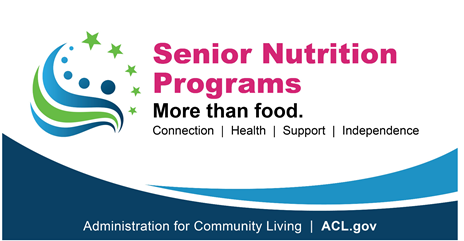
For additional nutrition information and free webinars during the month of March, please visit ICOA website and events. New nutrition education information will be provided starting March 1st and during the entire month.
Visit Administration for Community Living’s website to see how the healthcare system benefits if seniors eat a nutritious meal at a congregate meal site.
Valentine’s Recipe Roundup
There is something for everyone in this Valentines recipe roundup! Express your love by making a healthy and delicious meal for someone you care about…or just for yourself, because you deserve it too!

Heart-Shaped Pizza with Bell Peppers / EatingWell.com
family friendly / fun to make

Baked Chicken Parmesan / Tasty.com
healthy comfort food / easy peasy

Salmon & Asparagus with Lemon-Garlic Butter Sauce / EatingWell.com
low carb / healthy salmon

Spaghetti with Lemon & Toasted Walnuts / VegetarianTimes.com
meatless / healthy comfort food

Stir-Fried Shiitake Mushrooms with Tofu & Bok Choy / BetterNutrition.com
vegan / takeout fake-out

Kid-Friendly Fondue / SuperHealthyKids.com
family friendly / fun to eat

Mediterranean Beef Pinwheels / IDBeef.org
meat lovers / feels fancy

Easy Shrimp Ceviche with Avocado / TheKitchn.com
low carb / seafood

Thai Beef Salads / MyRecipes.com
meat lovers / takeout fake-out
Use Technology to Prevent Loneliness

As we slowly recover from a much different holiday season, each of us may be adjusting in our own unique way. A sense of loss due to a change in holiday tradition, relief due to it all being over, or loneliness due to no longer being surrounded by family.
A 2018 survey of 20,000 adults conducted by Cigna showed that nearly half (46 percent) of 20,000 U.S. adults report that they feel alone sometimes or always. This loneliness is no-doubt felt fully by the aging population, and is likely exacerbated by both the pandemic, and post-holiday blues.
Although technology will never replace personal contact, it can bring a familiar face to the screen, conversations with a virtual friend, and more adventures than anyone could experience in a lifetime. Whether you prefer to visit the Louvre, chat with an artificially intelligent robot, or take a free course at Harvard, here are a few ideas to fill time and combat loneliness.
Social Media
Facebook, Instagram, etc. are a great platform to reconnect with old friends, see what is happening in your grandchildren’s lives and participate in games or social events.
Virtual Reality
Myndvr creates immersive virtual reality.

Webcams
Webcams give you the opportunity to experience real-time views of animals and places.
Elephants, Panda, Lion, Monterey Bay Aquarium, and National Parks
Robotics
Chat bots are artificial intelligence applications that respond to human interactions. Some of the most popular are apps Woebot, Replika and tabletop robot Elliq.
Online Classes & Activities
Senior Planet offers many free online classes, expanded with membership.
Virtual Support
Virtual Support is actual therapy support, only online.
Circles up offers emotional support for those struggling with loneliness, or other emotional issues.
Quarantine Chat allows people to chat on the phone. No phone numbers are exchanged, protecting everyone’s privacy.
Big and Mini is designed to bring older and younger adults together. This connection is designed to be a mentorship between a senior and a younger adult.
Sweet Readers connects youth 11-22 and seniors with dementia for 15 – 30 minute “story times”.
Robotic Pets
These robotic stuffed animals from Joy for All react like a live animal. These animals are a wonderful gift for someone with dementia, or who has had to give up their special pet.
Education
Free online courses at many colleges including: Harvard; Stanford; and Yale
Boise Community Education also has a variety of online classes
Links to New Adventures
This is only a small sampling of available virtual tours.
Science: NASA; North Carolina Museum of Natural History
History: Smithsonian Natural History Museum; American Battlefields; National Museum of the US Air Force
Art: Louvre Museum; VanGough Museum; Albertina Museum
Other: National Aquarium; National Parks; and Washington DC
Loneliness is as bad for your health as being obese or smoking 15 cigarettes a day. (Holt-Lunstad, 2015)
These statistics show us the importance of working towards a solution. Technology is not the complete answer, but it brings us one step closer to disrupting the silent epidemic of loneliness.
Although many seniors may find technology intimidating, we cannot overlook the advantages.
If you have a senior in your life, take the time to teach them about technology. The knowledge will enhance their lives, but the time spent with them will enhance yours.
Dementia Capability

As the number of adults living in the United States grows, the number of individuals living with dementia grows along with it. People who live with dementia and their caregivers often require and benefit from a broad array of services and supports that help them continue living in the community. As a result, the Idaho Commission on Aging and Area Agencies on Aging (AAAs), which have decades of experience helping older adults and people with disabilities remain in their homes and communities, are at the front lines of providing critical services and have been developing a statewide program to ensure access to sustainable, long-term services and supports that can meet the needs of persons with Alzheimer’s disease and related dementia and their caregivers.
Supports include:
- Rest for the caregiver. Several publicly funded respite programs exist in Idaho, contact your local Area Agency of Aging to learn more.
- Alzheimer’s Association of Greater Idaho
- Family Navigator Pilot (SW Idaho)
- Powerful Tools for Caregiver classes. A 6-part workshop designed to help family caregivers find balance while caring for a loved one.
- ICOA Website and Dementia Skills online course
Researchers continue to examine ways to prevent or delay dementia and a 2017 review by National Academies of Sciences, Engineering, and Medicine, found evidence that three types of interventions–cognitive training, blood pressure control, and increased physical activity–could help prevent or slow cognitive decline and dementia (NAP, 2017). Similarly, the Centers for Disease Control and Prevention (CDC) supports the concept that brain health is connected to heart health. The CDC recommends steps such as controlling blood pressure, eating healthy foods, limiting alcohol, managing diabetes, not smoking, and staying active as ways to reduce risk factors for dementia.
Sources:Academies of Sciences, Engineering, and Medicine, Preventing Cognitive Decline and Dementia: A Way Forward; https://www.nap.edu/resource/24782/Highlights062217CognitiveImpairment.pdf
U.S. Centers for Disease Control and Prevention, Brain Health Is Connected to Heart Health; https://www.cdc.gov/aging/publications/features/healthy-body-brain.html
Radon: Fact or Fiction

By: Hannah Day, Health Education Specialist, Environmental Health Program, Idaho Department of Health and Welfare
January is National Radon Action Month
Have you ever heard of radon gas? Did you know radon is present in many Idaho homes? The Environmental Health Program within the Division of Public Health manages the Idaho Radon Program and can help separate radon facts from fiction and keep your family healthy.
FACT: All homes should be tested for radon.
Radon is a naturally-occurring radioactive gas that you cannot see, smell, or taste. It enters homes through gaps or cracks in the foundation. All homes, even new builds and those without basements, can have high levels of radon gas. With many Idahoans working from home due to the COVID-19 pandemic, our risk of exposure to radon is increased as most of our work and personal life is now spent within the home.
Testing is easy and is the only way to know if you are being exposed to radon in your home. It is recommended to test your home every two years or after any remodeling.
How to find a test kit: Contact your local public health district – they have free short-term test kits to give away. You can also order a short-term test kit for $10 from www.radonidaho.org.
MYTH: Radon is not an issue where I live.
Two out of every five tested homes in Idaho have tested high for radon. In fact, high radon levels have been found in every county in the state. To learn more about radon levels where you live, please visit www.radonidaho.org and view the interactive map.
MYTH: Radon is not harmful to my health.
Long-term exposure to radon gas is known to cause lung cancer. Radon is the leading cause of lung cancer in non-smokers. To learn more about the health effects of radon, visit the Environmental Protection Agency’s (EPA) Health Risk of Radon website.
FACT: Winter is the best time to test a home for radon.
Radon levels can change by season and with the weather. The highest levels of radon are found during winter months when homes get less fresh air. To learn more about radon testing and how to respond to a radon problem, visit www.radonidaho.org.
FACT: A Radon problem can be fixed!
Radon mitigation systems can effectively reduce the levels of radon in a home. The Idaho Radon Program recommends hiring a nationally-certified radon professional to fix your home. To locate a radon professional, visit www.radonidaho.org.
For more information, contact the Idaho Radon Program: 1-800-445-8647 or radon@dhw.idaho.gov.
Saving for Retirement

No one can predict the future. That is why saving for retirement is so complicated. As members of PERSI, State of Idaho employees are in an enviable position in our retirement planning strategy. However, there are several options above and beyond our PERSI 401(k) that can help us save for our retirement years. Let’s look at some strategies and products we can use to boost our retirement savings.
Strategies
- Set a goal. Determine how you want to live out your retirement years. Do you want to travel the world or stay home and tend to your garden? How much money will you need to accomplish these goals? A popular rule of thumb is to plan to have savings of about 25 times your expected annual expenses. At retirement you can withdraw 4% each year to live comfortably. Remember that commuting expenses will go down, but healthcare related expenses may go up.
- Use a retirement calculator. There are several comprehensive retirement calculators available online by reputable investment companies.
- Start early. The benefit of compound interest means that any interest you earn is added to the base savings amount and new interest is earned on top of that. Over time, this is a powerful way to save for retirement. Plan to contribute at least 10% of your gross earnings to whichever savings plan you choose.
- Automate. Set up automatic contributions to your retirement savings plan to support your goals. You do not need to think about it, it is already done!
- Delay claiming Social Security benefits as you near retirement age. For each year you wait (until age 70), your benefit will increase.
Products
- Traditional IRA: Your money is not taxed at the time you contribute it. This means that your full contribution earns interest. Your income must be under $124,000 annually to qualify. The contribution limit is $6000 per year, unless you are over 50 at which time the limit increases to $7000. You can begin drawing funds when you reach 59 ½ years old, and you must start drawing at age 72.
- Roth IRA: Your money is taxed up front. This allows you to not pay taxes during your retirement years. The income limit is the same as the traditional IRA, however you can make partial contributions if your salary is under $139,000. If the account has been open at least five years, you can begin withdrawals at age 59 ½, but there is a 10% penalty if you choose to withdraw earlier. There are no minimum withdrawals required.
Traditional and Roth IRA requirements do change, so be sure to research each option fully before signing on the dotted line. Also, a traditional IRA can be converted to a Roth. Evaluate your mindset and don’t let your short-term goals derail you from your long-term goals. To learn how to keep your hard earned savings safe and avoid fraud, refer to the valuable resources on the Idaho Commission on Aging’s website.
Diabetes Prevention During a Pandemic

By: Nanci Jenkins, MS, RDN, LD, WIC Dietitian and D,HD, & S Grant Coordinator for Panhandle Health District 1
Have you checked your weight lately? Is your weight creeping up? Are your blood pressure and blood sugar levels rising? Or maybe you have no idea because it’s 2020 and the U.S. is still in the grip of a pandemic. You are not alone! Let’s face it; COVID-19 has changed many of our lives. We are spending more time at home. Our eating habits are changed and our routines for exercise are upended. Viola! The COVID-Ten arrives; ten pounds of unwanted weight gain commonly noted this fall as we realize one more effect the Pandemic has had on our health. Time to step away from the less healthy crowd starting today! The sooner you take that first step, the sooner you decrease your risk of Diabetes, Heart Disease, Stroke or an even more severe illness if you get COVID-19. So what can you do? The following 3 simple steps will start you on your path towards better health.

1. Eat Well
Idahoan’s are told to stay at home these days so why not perfect the art of healthy cooking? Focus on increasing vegetables, fiber, and water. Worried about getting COVID-19 at the store? Have the store shop for you and pick up your groceries or have them delivered.

2. Eat Less
Watch an old movie from the 1950’s and pay attention to their plate and glass sizes. Try serving yourself on the smallest ones in your house. Or ask yourself the simple question before every meal or snack, “Do I really need to have these calories right now?”

3. Be More Physically Active
You’ve been walking daily and that’s great! Now try adding an exercise video when you return from your walk or later in the day. Ever tried yoga? “Sit and Be Fit”? Maybe hand weights, wall push-ups, or resistance bands are more your style? Make time for 150 minutes of activity at a moderate pace every week!
If you are at least 18 years old and are overweight or obese with a risk of diabetes, you may qualify for the National Diabetes Prevention Program (DPP). This is a CDC recognized and Medicare approved group Lifestyle Change program. Panhandle Health District 1 (PHD1) offers DPP programs in Hayden and in Sandpoint as well as virtually. Go to https://panhandlehealthdistrict.org/diabetes-programs for more information. If you prefer an in person program and live outside of the health district’s geographical area, you may find a DPP program closest to you by going to https://nccd.cdc.gov/DDT_DPRP/Registry.aspx.
Take that first step alone or take it with others in a group with a Lifestyle Coach as in a DPP class. It’s up to you to take it any way that works best for you. Make today be the day you step towards a healthier version of wonderful you!
National Prescription Drug Take Back Day

National Prescription Drug Take Back Day
October 24, 2020 at 10:00 am – 2:00 pm
Across the country, an estimated 9.9 million Americans misuse prescription drugs, and studies show that a majority of abused prescription drugs are obtained from family and friends, often from the home medicine cabinet1. To help prevent misuse of prescription drugs, the Drug Enforcement Agency (DEA), along with its state and local partners, hold National Prescription Drug Take Back Day events each spring and fall across the country to provide an opportunity for Americans a safely and securely dispose of unused and expired prescription medication.
The next National Prescription Drug Take Back Day is Saturday, October 24, 2020 from 10am-2pm, and the Office of Drug Policy (ODP) is encouraging local organizations across the state to coordinate Take Back Day events in their communities to help Idahoans properly dispose of medications and prevent prescription drug misuse in our state. To help organizations plan Take Back Day activities, ODP put together an Event Planning Toolkit with step-by-step planning instructions, promotional materials, how-to guides, and helpful tips to successfully organize and advertise the event throughout the community.
On the last National Take Back Day in 2019, there were 38 Take Back Day events across Idaho and 5,402 pounds of drugs collected. This October, our goal is to increase those numbers by 25% and organize at least 47 Take Back Day events and collect at least 6,752 pounds of drugs statewide.
Together, we can reach our goals and help prevent prescription drug misuse in Idaho. To learn more about National Prescription Drug Take Back Day and find a local Take Back Day even in your community, visit https://takebackday.dea.gov.
Residents’ Rights
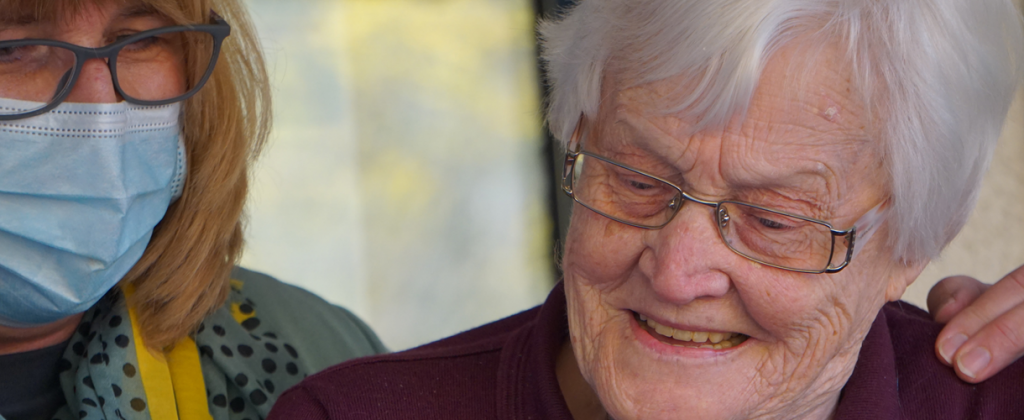
If you or a loved one resides in a nursing home or assisted living facility, then residents’ rights matter!
Idahoans maybe unaware that their rights continue even though they are residing in a long-term care facility. Rights do not end once you step through the door of a nursing home or assisted living, rather knowing your rights become even more important. Exercising your rights has no time limitations, age criteria or location requirements.
Both nursing homes and assisted living facilities are required to do assessments of needs upon admission and develop a plan of care which is centered around your personal needs, preferences, and values.
Care plans should be developed with each individual resident in mind. What are your likes, dislikes, what do you enjoy doing and when would you like to do it?
Making and communicating your preferences and needs for care will increase quality of life and overall satisfaction.
Your Rights Include:
- Right to a dignified existence.
- Right to self-determination.
- Right to be fully-informed.
- Right to raise grievances.
- Right of access.
- Rights regarding financial affairs.
- Rights during discharge or transfer.
Awareness of your rights is the first step to exercising them.
Each facility should have posted residents’ rights in a common area where they are accessible to resident and family. If you are not able to find a copy of the residents’ rights in your facility, ask a staff where they are located. If you feel that your rights are not being respected contact your local ombudsman and they will advocate for you and assure your rights are honored.
Ombudsman resolve complaints, protect rights, and promote access to services and good care for resident residing in Long Term Care facilities. The Older Americans Act (OAA), Title VII, Chapter 2, Sections 711/712 and 45 CFR § 1324.13 Federal Regulation require the Ombudsman program provide services to assist residents in protecting their health, safety, welfare and rights.
Idaho Family Dinner Night

Celebrate Idaho Family Dinner Night on September 22!
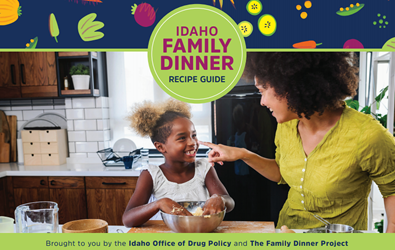
Eating together regularly as a family is one of the best ways to build and maintain strong relationships with your children. Frequent family dinners are linked to positive benefits for youth, including lower rates of substance use, decreased stress, higher self-esteem, and better academic performance in school.
That’s why the Office of Drug Policy (ODP) is kicking off an Idaho Family Dinner Night campaign to encourage parents across the state to celebrate Idaho Family Dinner Night on September 22 and make family meals a regular event in their homes.
Idaho Family Dinner Recipe Guide
To help families celebrate and connect around the dinner table, ODP created the Idaho Family Dinner Recipe Guide, which is filled with conversation starters, games and activities, and simple, budget-friendly recipes, including:
- Easy Cheesy Enchiladas
- Easy Turkey Skillet Dinner
- Hot Stuff Casserole
- Tasty Italian Chicken
- Apple Crisp
To develop the Recipe Guide and share resources with parents, ODP has partnered with The Family Dinner Project, a national nonprofit initiative that champions family dinner as an opportunity for family members to connect with each other through food, fun, and conversation about things that matter. ODP is encouraging Idaho parents to sign up for The Family Dinner Project’s free online program – Food, Fun, and Conversation: 4 Weeks to Better Family Dinners – for tools and resources to help make family dinners a household staple in just four weeks.
For more information about Idaho Family Dinner Night, download the Recipe Guide, and learn how to become a family dinner pro in three easy steps, visit https://odp.idaho.gov/family-dinner-night/
25 Ways to Use Zucchini

It’s that time of year when the zucchini starts popping up in backyard gardens. Here are 25 delicious ways to prepare this summertime staple!
- Add it to a salad
- Add it to a smoothie
- Bake it
- Eat if for dessert
- Eat it for breakfast
- Eat it raw
- Freeze it for later
- Fritter it
- Grill it
- Hasselback it
- Layer it in lasagna
- Make a pie
- Make chips
- Make ratatouille
- Make vegetarian “meat”balls
- Make zoodles
- Make zucchini bread
- Marinate it
- Mash it
- Pickle it
- Roast it
- Roll it
- Stuff it
- Turn it into oven fries
- Turn it into salsa
3 Ways to Manage Stress

Stress is a normal part of life, but living in a state of constant, chronic stress is not healthy. Here are three simple things you can do today to help you relax and reduce the impact of stress on your body and mind.
Deep Breathing
Deep breathing can be used to quickly reduce stress and tension. It increases the supply of oxygen to your brain and stimulates the parasympathetic nervous system, which promotes a calming “rest and digest” response. Breathing techniques help you feel more connected to your body and quiets your mind. Try one of the deep breathing techniques linked below.
Stretching
Emotional stress can build up in our bodies and cause tension in the head, neck, and shoulders. Stretching is one easy way to relax and calm your muscles. Try the following stretches throughout your day or whenever you notice yourself feeling tense.
- Cable Stretch:
- While sitting with chin in, stomach in, shoulders relaxed, hands in lap, and feet flat on the floor, imagine a cable pulling your head upward. Hold for 3 seconds and relax. Repeat 3 times.
- Neck Stretch:
- Tilt head to one side (ear towards shoulder). Hold for 15 seconds. Relax. Repeat 3 times on each side.
- Diagonal Neck Stretch:
- Turn head slightly and look down as if looking in your pocket. Hold for 15 seconds. Relax. Repeat 3 times on each side.
- Shoulder Shrug:
- Slowly bring shoulders up to the ears and hold for approximately 3 seconds. Rotate shoulders back and down. Repeat 10 times.
5-4-3-2-1 Technique
Many times, the stress we experience is because we are replaying something that has already happened or worrying about something that might occur in the future. The 5-4-3-2-1 Technique can help you keep your thoughts in the present moment by using your five senses to identify tangible things around you. Bringing your thoughts to the present moment can lower anxiety and ease your mind through stressful situations. The next time you notice your thoughts racing, take a deep breath, and do the following:
- Identify 5 things you can see.
- Identify 4 things that you can touch.
- Identify 3 things you can hear.
- Identify 2 things you can smell.
- Identify 1 thing you can taste.
https://academized.com/blog/take-a-deep-breath
https://www.ors.od.nih.gov/sr/dohs/HealthAndWellness/Ergonomics/Pages/exercises.aspx#Musculoskeletal
https://www.destressmonday.org/unwind-monday-5-4-3-2-1-coping-technique/
 Official Government Website
Official Government Website
